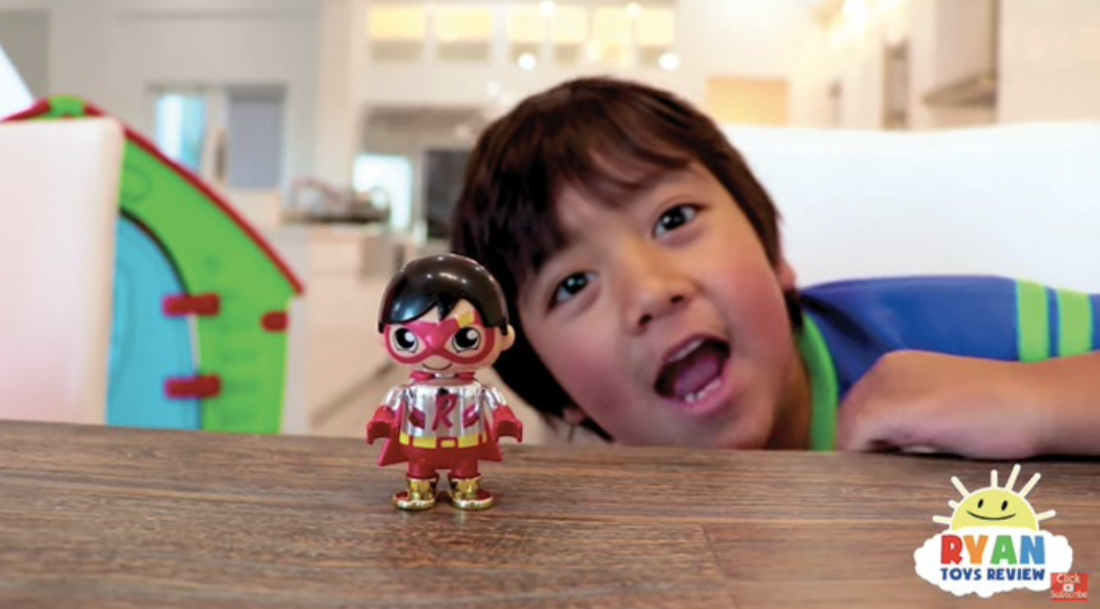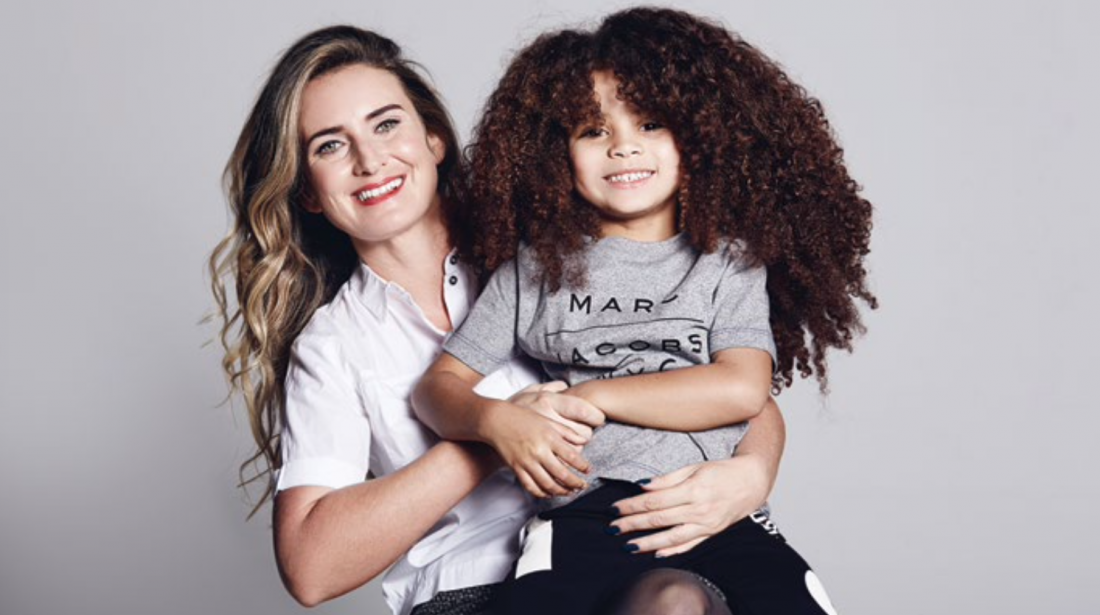They have millions of followers, make thousands of pounds… but are legally too young to have social media. Abbie Schofield investigates the under 13s making it big online.
Whether you embrace it or it makes you cringe, the word ‘influencer’ is now widely used to describe online content creators – specifically those with audiences engaged enough to act on their recommendations. You might be less familiar with the term ‘kidfluencer’, but with increasing numbers of children becoming YouTube stars, it is not uncommon to see a 10 year old in front of the camera.
Unlike family vloggers such as The Saccone Jolys, here the kids are centre stage, filming toy reviews, unboxings and challenges – and garnering millions of views. The world’s biggest kidfluencer is US-based Ryan of Ryan ToysReview; the seven year old’s toy review channel has 18 million subscribers.

Forbes named Ryan as the highest paid YouTuber in 2018, having brought in $22 million in revenue. Running the channel, which Ryan’s parents claim was his own idea, has become a full-time job for his mother turned ‘momager’, an ex- chemistry teacher. The UK’s most prominent kidfluencer is 10 year old Tiana, who lives in Nottingham.
She has gained over 9 million subscribers on her main channel, Toys and Me, and another 4 million on her vlog channel since she began uploading in April 2015. Her most- watched video, ‘Kids Driving Power Wheels on Car – McDonald’s Drive Thru Prank!’, documents Tiana (with supervision from her father) driving an electric toy car to McDonalds. It has over 70 million views. These immense figures have forced marketers to notice the impact that kidfluencers are having on the toy industry.
One product-dedicated YouTube video can send sales through the roof as transfixed children ask their parents for the same game their favourite kidfluencer is playing. So why have kidfluencers sky- rocketed to online fame – and amongst the fun and games, what are the ethical concerns?
The history of kidfluence
Famous children are not a recent social development. In 1921, seven year old Jackie Coogan was introduced to stardom after appearing in Charlie Chaplin’s classic film ‘The Kid’, and is considered the first ever child celebrity. The 1960s saw the rise of children’s pageants, which are still very much alive today, both traditionally and via reality television shows like Britain’s Got Talent and Dance Moms. We are used to the tabloids reporting every move of young celebrities growing up in the spotlight – Macaulay Culkin, Lindsay Lohan, Britney Spears – who despite the protection of their entourage and an army of publicists often have very public downfalls.
In terms of online celebrities, since YouTube’s birth in 2005, we have seen the development of content uploaders from just-for-fun creators to money makers, their talents capitalised due to their incredible selling power. With 30% of internet users aged 18-34 now using ad blockers, it’s no wonder that marketers have turned to YouTubers to help promote their products – and with results.
According to the Branded Entertainment Network, the average click-through rate for YouTube pre-roll ads is 0.8%, whereas for YouTube campaigns with influencers the click-through rate is 1-3%. This is likely due to the perceived authenticity of the branded content – many influencers pride themselves on only promoting things they actually love, meaning the chance of their audiences engaging with the advertisement is higher.
Whilst the use of adult influencers in branded campaigns has been around for close to a decade, it is only in the past few years that children have entered the commercial blogosphere.
Why is YouTube the new children’s TV?
Statistics on exactly how many children watch YouTube are hard to come by, partly because many are watching on a parent’s account (usually on a tablet), or are using the YouTube Kids app designed especially for children.
YouTube Kids is a ‘signed out experience’, meaning no account is needed and YouTube do not track any of the viewer’s details. Current EU legislation (COPPA and GDPR-K) outlaws the collection of information about children’s online habits. However the huge number of under 13s watching YouTube is evident in the billions of views that videos aimed at that demographic can get. It also shows the rewatchability of the content; children tend to replay the same video multiple times, increasing the view count.
BatteryPOP is another platform which, like YouTube Kids, only shows child-appropriate content. Increasing numbers of talent agencies now specialise in representing kidfluencers, and batteryPop have their own agency, aptly named Kidfluencers, which connects influencer marketers with kid creators to help them develop their careers.
Kidfluencers’ Director, Emma Blackwell, told Blogosphere: “The internet is ginormous, which means it’s hard to monitor what’s good versus what’s unsafe. As kids start to learn about online literacy and figure out how to navigate the internet, we should do our best to make sure that they have safe places to do so.”
The appeal of kidfluencers is simple: real life kids doing real life activities, be it playing with new toys or filming silly challenges with friends. The content is perfectly poised on the scale between relatable and aspirational – the child watching might not be able to unbox the latest toy craze on Christmas day or jump in a bath full of Orbeez water beads, but they can watch Tiana doing it.
“I think kids are naturally curious about other kids,” explains Emma, “so the idea of someone their own age who may live in a different state or a different country but still experiences normal stuff really helps kids establish more facts about the world they live in.”
For many parents, YouTube has replaced traditional TV time. Parental restrictions and the YouTube Kids app ensure that their children are watching appropriate content. Much of YouTube Kids’ videos encourage learning and creativity, like arts and crafts or playing games, providing on-screen entertainment whilst inspiring off-screen life. The appeal for marketers is also obvious: the ability to advertise to a young audience via brand-safe content.
“For brands, getting someone who can speak about your product on a peer-to-peer level is really valuable,” Emma says.
“Kids are their own decision makers, and they look to their friends in both real life and online to see what’s popular.”
After all, who better to positively review your product than the very demographic it is aimed at?
The safety of kidfluencers
Eight year old kidfluencer Farouk James (@faroukjames) has over 211,000 Instagram followers. His account began gaining traction after his mother, Bonnie Miller, began posting photos of Farouk, and his distinctive afro hair caught users’ attention.
At first, Bonnie was extremely concerned about safety: “Originally when I set up the page, I set up another page where I followed everyone that followed him in case they were paedophiles,” she told Blogosphere.
“But because he was getting so many followers I couldn’t follow back as quickly so that idea went out the window. I do check as they come through and if I see that their page is a bit dodgy I block them… It’s really difficult to monitor,” Bonnie confesses. The majority of kidfluencers’ YouTube channels are managed by a parent or guardian.
For example, all Tiana’s content is planned and filmed by her father, who also oversees her comments and deals with everything business-related, like her online merch store ‘Hearts by Tiana’. There are also initiatives like SafeFam, a certification programme for families and children on YouTube which helps them understand the requirements of content for an under-13 audience.

SafeFam creators have to go through an assessment and training before getting a ‘SafeFam badge’, an indicator that their content is child- friendly. Emma believes it’s the responsibility of networks like Kidfluencers to ensure child wellbeing: “The issue isn’t so much with using kidfluencers as much as it is how you do it. If you’re a kid watching a video that has an advertisement in it, we ensure it’s made clear and obvious either through text or a verbal disclaimer. Participating in a sponsored project is supposed to be fun, so if a kidfluencer doesn’t have the time or doesn’t like the product or if there’s literally any reason that the project could add additional stress, we want them to prioritise whatever is most important.”
So whether their careers are happy accidents or calculated moves from ambitious parents, it’s clear that kidfluencers aren’t going at it alone.
The ethics of kidfluencer marketing
Despite the safety measures being taken by both YouTube and parents, the concept of ‘kidfluence’ is concerning for a number of reasons. Firstly, being a ‘kidfluencer’ could negatively impact a child’s mental health. If a child were exposed to nasty comments or trolling it could damage their self-esteem. Plus the pressure of being an online celebrity can be anxiety-inducing for the most resilient of adults, let alone a vulnerable minor.
Furthermore, in recent years there have been many debates about how visible children should be online: should parents post photos on social media without the child’s consent? Should influencers use their children as ‘props’ in branded content? And most importantly, are kidfluencers being exploited? The legal age for opening a Facebook account is 13, however many children’s social media footprints begin the very day they are born, when proud parents upload a picture of their new baby.
In some cases, children have hundreds of images of themselves online before they can even hold a device. There are those that believe posting images online of a child without their consent is unethical, particularly considering the privacy and safety issues surrounding social media today.
Fashion influencer Sammi Jefcoate (@sammijefcoate) told Blogosphere, “Even if I didn’t have hundreds of thousands of of followers I still wouldn’t post photos of my son on my Instagram. I can’t ask his permission about posting photos of him, he has no idea what it means.”
The problem reaches new heights when it comes to influencers using their children in sponsored content. Clemmie Hooper, a parenting blogger known as @mother_of_daughters, was recently criticised on parenting forum Mumsnet for this very reason.
After featuring her young daughters in a sponsored Instagram post advertising razors to her 620,000+ followers, Clemmie was criticised for using her children’s images for monetary gain, particularly for an advertisement that promoted conforming to the gender stereotype that women should be hairless. One Mumsnet user commented: ‘selling children doesn’t just mean using them in an ad. It’s also using them as content to the extent that it brings in £’.
The backlash resulted in Clemmie deactivating her account for a number of weeks. Whilst no one deserves to be bullied or shamed online, this incident does highlight how strongly people feel about whether it is morally right for parents to use their children as ‘content’, especially when brands and payment are involved.
Even if an adult is the brains behind a kidfluencer’s channel, the child is the face of the brand and generates the (often life-changing) revenue. For example, in June 2018 Tiana posted a video called ‘NEW HOUSE TOUR!!’ on her vlog channel, showing viewers around her family’s new mansion complete with swimming pool and huge garden, undoubtedly a product of Tiana’s YouTube success.
Is Tiana – the 10-year-old breadwinner – being exploited, her privacy sacrificed for her parents’ financial gain? And in another 10 years will she be happy with her parents’ decisions? These are questions that don’t necessarily have answers. But a quick scroll through a kidfluencer’s feed will probably make you slightly uneasy – childhood innocence in such close proximity to rampant consumerism makes for uncomfortable viewing.
Overall
Be it exploitative or extraordinary, kidfluencers have changed children’s screen time for good. It’s reassuring that when it comes to safety, YouTube are well aware of how many children are watching, and have measures in place to make the experience as secure as possible – after all, if the platform loses parents’ trust, they lose billions of views. Whilst many kidfluencers’ videos involve creativity, storytelling and activities, the majority of content also features the latest toys, be them genuine purchases, PR gifts or sponsorships.
Much like YouTube’s Primark haul epidemic, new stuff equals new content which equals more views. Children are subject to enough advertising as it is, and further product placement on YouTube just intensifies their desire to have the latest ‘it’ toy, regardless of whether their parents can afford to purchase it. Because let’s face it, a seven year old doesn’t know what #ad means. It’s also unclear which kidfluencers are making videos of their own accord and which are simply starring in digital operations controlled by their parents. But one thing is certain: YouTube is not child’s play – it’s business.
